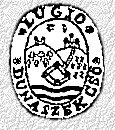
Relics of history in Dunaszekcső

 |
Relics of history in Dunaszekcső |
 |
Due to a favourable climate and other natural assets, human settements have existed at Dunaszkecso fo at least two thousand years. Evidence of prehistoric humans races have also been excavated. During Roman times the settlement, called Lugio, was an important part of the Roman defence system, i.e. the Limes. While many Roman artifacts have been found, an archelogical study is required to determine the significance and purpose of these items.
Roman artifacts and ruins found in the village include:
Even today, a lucky visitor may find Roman coins on the riverbank.Most
of these artiffacts were found at a 100m high fortified mount on the Danube
bank known as Várhegy (Castle Hill). The bust of hte emperor, Marcus Aurelius,
was excavated at theis location in 1974. As in Roman times, the castle
at Várhegy also served as the headquarters of rulers during the time of
Turkish occupation. Today, only relics, both excavated and undiscovered,
hold the stories of these times. Even today, archeological excavations
are being undertaken at the site of a Roman kiln uncovered by a villager
while working his vegetable patch.
Unfortunately
the Danube's destructive floods have washed away a part of Várhegy and
such a significant of relics have been lost to later generations. Even
today, the peaceful life of the villagers is occasionally threatened by
seious floods, two of which occurered during the
mid 20th century.
The
roman artiffacts and other relics of history can be found in the Museum
of the village, next to the grammear school.